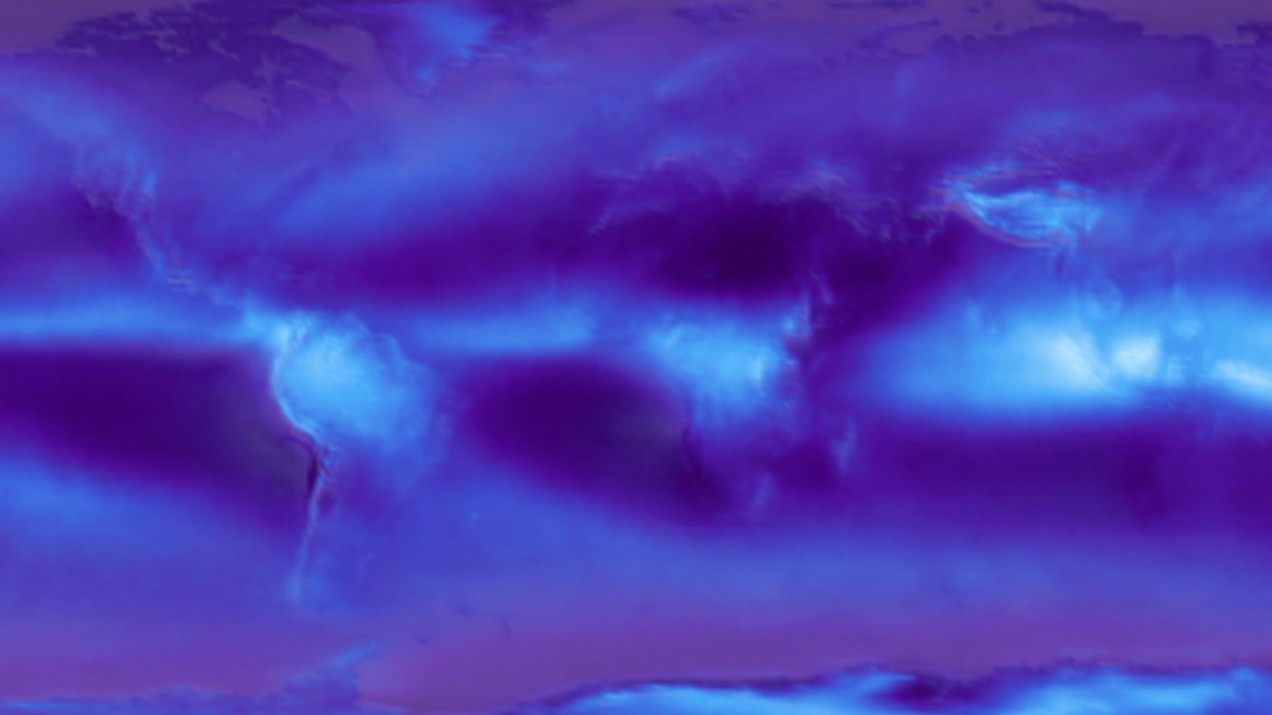

Space
A planetary telescope would use Earth’s atmosphere as a giant lens
The “terrascope” could outperform the light-gathering power of any feasible ground-based telescope.

Telescopes are expensive devices. The Giant Magellan Telescope, currently under construction in the Atacama Desert in Chile, will have a 25-meter mirror at a cost of around $1 billion. The proposed Thirty Meter Telescope on Mauna Kea in Hawaii will cost an estimated $2 billion.
Space-based telescopes are even more expensive. The much-delayed James Webb Space Telescope due to replace Hubble in 2021, which has a 6.5-meter mirror, is costing over $10 billion.
So astronomers are looking for innovative new ways to image the heavens that don’t cost the Earth.
Enter David Kipping at Columbia University in New York, who today proposes using Earth’s atmosphere to bring astronomical light to a focus. His idea is to use the entire planet as a kind of giant lens and place a space telescope at the focal point to snap the images. This telescope—the terrascope—would have the light-gathering power of a 150-meter telescope on Earth at a fraction of the cost.
First some background. Astronomers have long known that the atmosphere bends light that passes through it. “A setting Sun is a little more than half a degree lower than it appears as a result of this effect,” writes Kipping.
His idea is to take advantage of this effect on a planetary scale. “An observer at or beyond a distance of approximately the Earth-Moon separation would be able to exploit the Earth as a refractive lens,” he writes.
Such a lens would be complex. So Kipping has spent some time studying and simulating its properties and how they might be exploited in a giant terrascope. The challenges are many.
For a start, the atmosphere bends, or refracts, starlight as it passes through. But the amount of refraction depends on the density of the atmosphere, which varies with altitude above the surface. So light that grazes the upper atmosphere is refracted less than light that passes deeper into the atmosphere.
But various factors limit how deeply light can dip into the atmosphere. The most obvious is that the light must avoid Earth itself. But clouds also absorb light, so any refracted light must be high enough above the surface to avoid them.
Another important factor is that the atmosphere, and the aerosols and so on that it contains, absorb light at specific frequencies. So Kipping has had to work out how much might be lost in this process.
The atmosphere also glows faintly, which could smother the light from distant astrophysical sources. This “airglow,” the result of processes such as the recombination of molecules that are disassociated by sunlight, means the night sky is never completely dark.
But Kipping points out that most of this light could be blocked by a coronagraph—essentially a small disc on the terrascope that blocks light from the body of Earth and even from the lower reaches of the atmosphere, where helpful lensing does not occur.
Another variable is that the atmosphere expands or contracts when it is warmer or cooler. That would change the focal length of the terrascope. So finding the optimal orbit for the device would be important.
Kipping studies all these effects and more. His calculations suggest that a one-meter space telescope orbiting at a distance of 360,000 kilometers—that’s a little closer than the moon—would be optimal. Such a device should collect light that has dipped no further than 14 kilometers into Earth’s atmosphere and so remain well above the clouds.
With the planet acting as a lens, the focused light would be amplified by a factor of 45,000 during an exposure time of 20 hours. That’s equivalent to the amplification achieved by a ground-based telescope with a diameter of 150 meters.
Kipping concludes that a terrascope has significant potential. While he doesn’t calculate the cost of such a machine, he suggests that a 100-meter telescope on Earth would cost around $35 billion, an amount that exceeds the combined budget of NASA and the National Science Foundation.
Would it be possible to build, launch, and operate a one-meter telescope at a distance of 360,000 kilometers for less?
Probably. One of the most successful observatories in recent years has been the Kepler Space Telescope, which searched for and found numerous Earth-like planets orbiting other stars. This orbited the sun rather than Earth, over 150 million kilometers from home. The mission lasted for nine years, until it ran out of fuel, and cost a mere $550 million.
If those numbers are anything to go by, a terrascope might offer remarkable value for money.
Ref: arxiv.org/abs/1908.00490 : The "Terrascope": On the Possibility of Using the Earth as an Atmospheric Lens